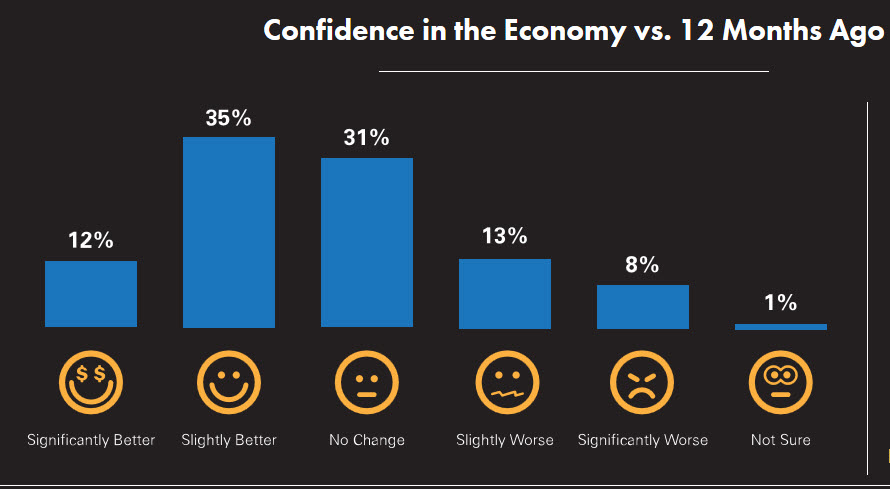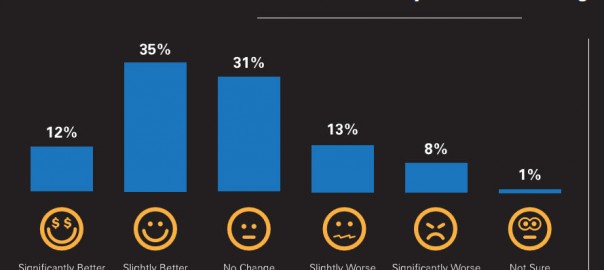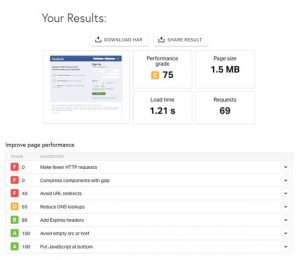
The outlook is bright for small businesses in 2015. In a recent survey of over 1,000 small business leaders respondents shared their thoughts about the upcoming year. The resulting 2015 State of Small Business Report identified the challenges SMB leaders face, as well as showcased the positive revenue growth expectations created by continued economic confidence. From the data analysis, there are four methods small businesses can use to grow revenue and increase profits in 2015.
Use these 4 methods to thrive in new markets:
- Gather business intelligence (BI).Don’t overlook the opportunities new technology offers. Big data is a concept that, in the past, implied only larger companies had the ability to collect vast amounts of consumer data to evaluate trends and make future business plans. However, big data no longer applies to just larger companies. There is a considerable amount of data available to small businesses to help identify consumer trends and assist in revenue growth by decreasing money invested in slow and ineffective processes. The ability to evaluate and apply data has become a huge component of proper customer acquisition and increased conversions, but now the ability to use that data is more wide spread. Business owners with the ability to understand how the collected data can be applied to their company will end up with an advantage over competitor in 2015. An easy way to begin big data collection is the implementation of a CRM system to manage your company’s communication with current and future customers. Currently, 71% of small businesses do not use a CRM. Despite the low number of CRM users, the recent report reveals that small business owners are beginning to understand the importance for marketing tools such as CRM solutions (with approximately 20% stating their adoption in 2015), email marketing and social media engagement. A good system will use technology to organize, automate and synchronize sales, marketing, customer service and technical support.
- Invest in paid social media ads and analysis. According to the survey, less than 3% of revenue is invested in marketing and most marketing is done through social media channels (often those that are free) like Facebook, LinkedIn, and Twitter. Facebook is currently the most widely used social media channel. However, since the site changed their Edgerank algorithm (altering the content users see in their feeds), organic traffic has been cut in half. It’s worth the time to research the different types of ads Facebook offers to business marketers. Not only is investing in paid social media marketing an opportunity for small businesses to expand into newer markets, the potential data collection can help SMBs create leads and offer more personalized service to consumers.
- Change what you offer local consumers. Providing more customized or personalized products and services to consumers is another way to engage those with your current, local market. Exclusive offers sent to both frequent and loyal customers, not only makes those customers feel like your company recognizes and appreciates their business, but it also makes that customer feel special. Although a large business, Zappos piloted a unique and very creative way to reach specific customers through Instagram and Twitter. Customers who tagged pics with the hashtag #NextOOTD (outfit of the day) were sent a personalized shopping recommendation based on their photo. Don’t ignore what your small business knows about your customers, and use that information to your advantage – your personalized service will place you well ahead of larger competitors.
- Go global.Branching out to the international market can seem daunting to small business leaders, often because they don’t know where to start. In fact, only 5% expect to do so in 2015. However, for many small businesses, this untapped market has the potential to be a huge opportunity for revenue growth and increased profit – if done correctly. There are specific challenges many business leaders will face when attempting to take their company abroad, but the rewards of international expansion can far outweigh the risks. Consider the market differences, the behavioral differences and even the way your designated country conducts business. Your due diligence and research will help you make the transition easier.
Economic confidence has small business leaders feeling optimistic about expanding to newer markets in 2015. Whether it’s using new technology, increasing investment in social media, or finding ways to reach new consumers locally and internationally, the future for small businesses holds significant promise and potential as compared to the last five years.
(348)







